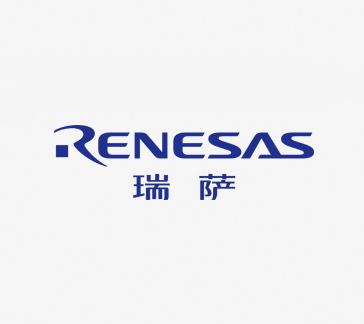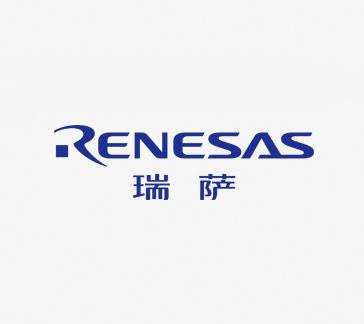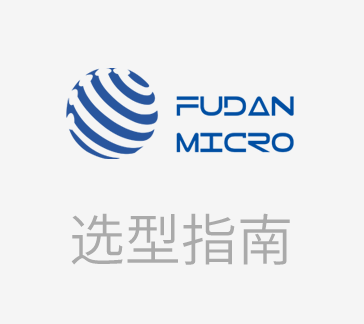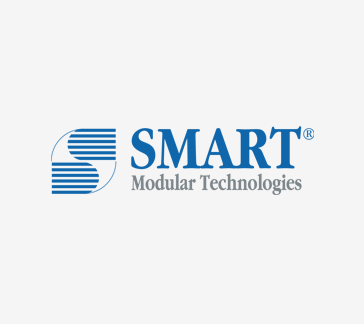News | NAND Flash Storage Solutions for the Data-Driven 5G Era | ATP




Fifth-generation cellular network connection, or simply 5G, is the latest cellular technology iteration. It promises colossal improvements in speed, bandwidth, latency and spectrum over 4G/LTE. As 5G brings new capabilities and possibilities, a mobile revolution looms in the Internet horizon, allowing faster and greater connectivity that will change the way people create and consume content. Such changes will also change the way data is stored, processed and accessed in the evolving world of the Internet of Things (IoT) as well as the Industrial IoT (IIoT), where machines, sensors and devices communicate constantly.
Keys to Unlocking the 5G World
Here’s a quick look at key technology requirements to unleash the full potential of 5G:
Latency – In networking, latency refers to delays that occur when data travels over a network. Applications that could benefit much from low latency include those that require instantaneous, time-critical communication. 5G is expected to deliver 10 ms latency, which is four to five times lower than 4G’s 40 to 50 ms.
Connection Density – This refers to the number of devices that a network can support to deliver messages of a certain size within a certain time in a certain area. Even in areas that are densely populated, 5G can handle 10 terabytes per second per square kilometer, or 1,000 times the mobile data volume that 5G can handle. 5G is capable of supporting 1 million devices per square mile compared with 10,000 to 100,000 using 4G.
Throughput– This refers to the amount of data that can be transferred within a given period of time. It measures the number of data packets that successfully reach the target destination per second. 5G throughput is pegged at 10 Gb/s, which is nearly 7 times better than 4G’s 1.45 Gb/s.
Aside from these, studies suggest that 5G will use 90% less energy per bit, resulting in longer battery life for mobile devices.
5G promises to be magnitudes better than 4G, and it is not just about speed. Near-negligible latency, a million devices connected per square mile, super low power consumption will certainly expand mobility in ways never before imagined and will impact every industry. Transportation, medical care, agriculture, manufacturing, aviation – all these and more will be transformed as 5G serves as catalyst for delivering new levels of performance and efficiency.
The Storage Challenge
The comparison above also shows that there will be 10x more data volume, as 5G is expected to enable billions of connected devices powering the IoT/IIoT. Clearly, 5G will deliver a major boost to IoT/IIoT applications, making this world not only more connected, but also data- rich and content-rich.
The following graph shows how much connected devices have increased over the years.
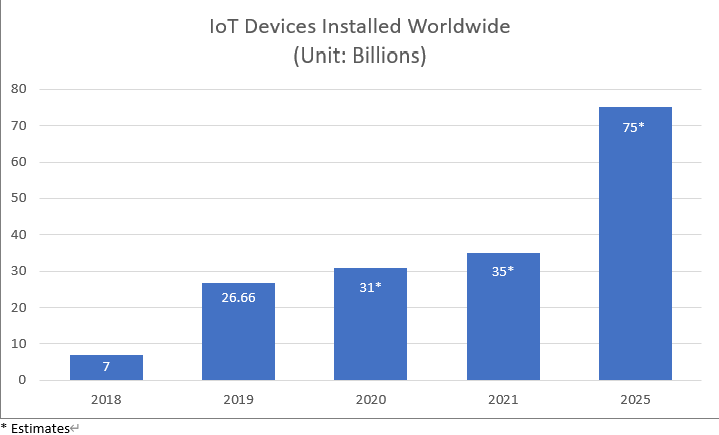
Figure 1. The number of connected devices installed worldwide shows the continuing growth of IoT/IIoT
Source: Security Today
According to a study by Statista, 75.44 billion devices will be connected by 2025. As devices connecting to 5G grow at exponential rates, these devices will generate massive amounts of data, with IDC estimates reaching 79.4 zettabytes by 2025.
Whether monitoring production on the factory floor, performing remote surgeries, navigating unfamiliar roads in an autonomous car, or getting updates on warehouse stocks, 5G will enable seamless, faster flows of information and speedy response times. 5G truly has the potential to unleash new possibilities in IoT/IIoT and empower artificial intelligence and machine learning. Data is at the heart of all these. And data in the 5G era will require expanded memory and storage capabilities.
Cloud storage has become a prevailing choice for many applications. However, 5G also empowers other applications that require real-time processing. IoT/IIoT devices will continually generate oceans of data that may be too huge to move, store and process from the cloud to be useful. With data surging in terms of volume, velocity and variety, 5G will require data storage closer to the source to provide timely retrieval and processing of data on demand.
ATP Electronics: Enabling the 5G Data Revolution
In this data-driven generation, 512 GB to 1 TB and up will be common storage capacities as 5G is expected to generate data at exponential rates. The following figure from Micron shows the memory and data storage requirements from 1G to 5G.
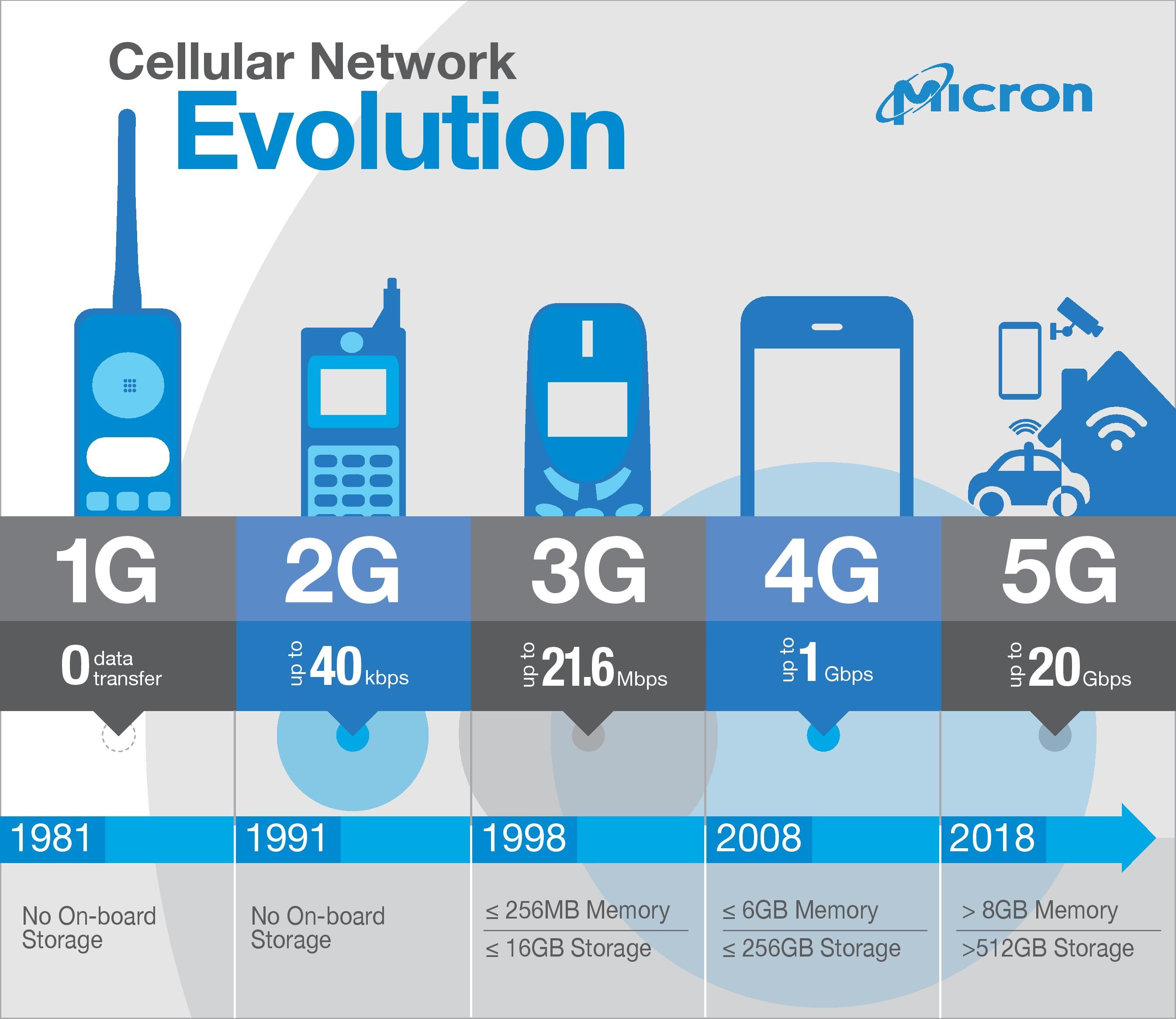
Figure 2. The Cellular Network Evolution shows the memory and storage requirements of different cellular technologies.
Source: Micron
ATP Electronics is ready and capable of meeting the data influx with its “Industrial Only” NAND Flash memory and storage solutions.
For 5G applications requiring low latency and fast throughput, ATP offers blazing-fast removable and embedded flash storage solutions delivering near-real-time responsiveness. For example, M.2 2280 NVMe modules with 8-channel PCIe Gen3 x4 interface deliver 3,420/3,050 MB/s sequential read/write performance, and 3D TLC SD/microSD cards feature 4KB page management and SLC caching algorithm, which allows 1/2 random access time and low latency compared with traditional solutions.
With 5G capable of supporting 1 million devices per square mile, there will be a huge demand for NAND flash storage in various form factors, interfaces and capacities, as well as performance and endurance ratings and other criteria, depending on use case. ATP solutions are available in different flash types, from single-level cell (SLC), multi-level cell (MLC), triple-level cell (TLC) and pseudo SLC (pSLC). They are also available in planar (2D) and 3D NAND, with customizable endurance options for best total cost of ownership (TCO) value.
ATP’s comprehensive portfolio meets stringent international standards. Each product is designed, built and tested rigorously to withstand tough operations and harsh environments.

Figure 3. ATP’s comprehensive NAND flash storage portfolio.
5G-Tailored Customization
Not all 5G applications have the same requirements. New 5G capabilities will give birth to various use cases that will add to the already-diverse mix. Standard, off-the-shelf NAND flash storage products might seem the easiest and cost-friendly solutions, but these may not meet the endurance and workload requirements of specific use cases.
ATP Electronics is well-equipped to assess a customer’s application needs and customize configurations based on those needs to optimize TCO. Firmware, production testing tools, and even operational processes may be designed for a wider base of customers, including those with smaller volume quantities.
- +1 Like
- Add to Favorites
This document is provided by Sekorm Platform for VIP exclusive service. The copyright is owned by Sekorm. Without authorization, any medias, websites or individual are not allowed to reprint. When authorizing the reprint, the link of www.sekorm.com must be indicated.
Recommend
Learning at the Edge: Building Intelligence into the Industrial IoT Endpoint
2022-05-19 - Industry News With endpoint data creation growth expected to increase at a CAGR of 85 percent from 2017 through 2025, Renesas expects the trend of driving intelligence from the cloud to the Industrial IoT edge will become increasingly common among customers as hardware and software continue to mature.
Data Security Takes Front Seat in Industrial IoT Design
2022-10-25 - Industry News A big part of the security services Keysight provide entails helping customers understand which tools to use and when starting with the basic building blocks and moving on to complete solutions. It’s the equivalent of buying a four-digit combination lock from the hardware store.
IoT Terminal Platform Equipment Product Catalogue
Company Profile IoT Terminal Platform Equipment low-power 32-bit ARM Cortex-M0 MCU C251 series low power 16-bit MCU Low-Voltage Power Line PLC Chip UHF RFID Multi-Protocol Reader Solution Real-Time Clock Chip & Secure Encryption Chip High-Frequency Reader Chip Serial EEPROM Memory SPI NOR Flash Core Competitiveness
2020/4/8 - Selection guide 高频阅读器芯片,高精度实时时钟芯片,900M UHF RFID READ-WRITE DEVICE,低功耗16位MCU,LOW-POWER MCU CHIP,SPI NOR闪存,ARM®CORTEX®-M0内核32位低功耗MCU芯片,串行EEPROM存储器,SECURE ENCRYPTION CHIP,SMART METER MCU CHIPS,UHF RFID READER,ARM® CORTEX®-M0 CORE 32-BIT LOW-POWER MCU CHIP,PLC电力线芯片,UHF RFID MULTI-PROTOCOL READER,低功耗32位ARM CORTEX-M0 MCU,智能电表MCU芯片,32-BIT LOW-POWER MCU CHIP,SPI NOR FLASH,HIGH-FREQUENCY READER CHIP,REAL-TIME CLOCK CHIP,SERIAL EEPROM MEMORY,LOW-POWER 32-BIT ARM CORTEX-M0 MCU,MCU CHIPS,安全加密芯片,HIGH ACCURATE REAL-TIME CLOCK CHIPS,低压电力线PLC芯片,PLC POWER LINE CHIPS,LOW-VOLTAGE POWER LINE PLC CHIP,低功耗MCU芯片,ARM CHIPS,LOW POWER 16-BIT MCU,LOW-POWER MCU CHIPS,ARM芯片,实时时钟芯片,FM3312,FM33LC045N,FM3313,FM25LG,FM33LC025N,FM3316,FM15160,FM25FXX SERIES,FM25LQ,FM33LG0XX SERIES,FM25FXX,FM25Q SERIES,FM25LG SERIES,FM33LC046N,FM33LC026N,FM33L015,FM33L013,FM33G042,FM33L012,FM33G043,FM24CXX,FM38025T,FM33LG023,FM17XX,FM33LG022,FM15XX,FM33LG028,FM3312T,FM33LG025,FM25QXX,FM17XX SERIES,FM33LG026,FM33G0XX,FM33G045,FM25Q,FM33G046,FM33L016,FM33G048,FM33A068,FM33L022,FM33LC023N,FM25F,FM17520,FM33L026,FM33L025,FM33LC043N,FM33L023,FM17522,FM3316 SERIES,FM33A0XX SERIES,FM3313 SERIES,FM3312 SERIES,FM33LC046U,FM33A0410,FM33A0610,FM15XX SERIES,FM151M,FM25F SERIES,FM24CXX SERIES,FM320X,FM17550,FM33LG043,FM33LG042,FM33LG045,FM33LG0XX,FM33A045,FM33A042,FM320X SERIES,FM33LG046,FM25QXX SERIES,FM33LC0XX,FM33G0XX SERIES,FM33LG048,FM33LC0XX SERIES,FM33G022,FM33G023,FM33G025,FM33G026,FM33A048,FM33G028,FM33LC043U
Zetta Memory‐ EEPROM/NOR/NAND/DRAM
2023/11/14 - Supplier and Product Introduction
SERIAL EEPROM,MEMORY,SD-MMC接口NAND闪存,SPI NOR FLASH,SD-NAND闪存,EEPROM,SD-NAND FLASH,I2C‐ EEPROM,DDR3 SDRAM,FLASH MEMORY,I2C-EEPROM,电可擦可编程只读存储器,串行电可擦可编程只读存储器,SPI NOR闪存,内存,闪存,SD-MMC INTERFACE NAND FLASH,ZD24C512,ZD24C1M,ZDSD02G,ZDV4256M16A‐13DPH,ZDSD04G,ZD24C256,ZDV4256M16A‐11DPH,ZDSD64G,ZDSD32G,ZDSD256G,ZD24C64,ZD24C02,ZDEMDCM032G-84A8,ZDSD16G,ZD24C08,ZD25Q16C,ZDV4256M16A‐11IPH,ZDSD08G,ZDEMDCM016G-84A8,ZDV4256M16A‐13IPH,ZDV4128M16A‐13DPH,NB25Q40A,ZD25WQ80C,ZDV4128M16A‐13IPH,ZDV4128M16A‐11IPH,ZDV4128M16A‐11DPH,ZD24C128,ZDSD01G,ZD25WQ16C,ZD24C2M,ZDSD128G,ZD25Q128C,ZDV4256M16A‐14DPH,ZD24C32,ZD25WQ32C,ZD24C16,ZDV4256M16A‐14IPH,ZDEMDIW008G-84A8,ZD25Q80C,ZD25Q32C,ZD25Q64B,ZDV4128M16A‐14IPH,ZDEMMC04G,ZDEMDIW016G-95A8,ZDEMMC08G,ZD25WD20C,ZDEMDCM064G-95A8,ZDV4128M16A‐14DPH
Why is NAND flash technology the unsung hero of the IOT market?
2025-07-25 - Technical Discussion It is easy to overlook the data-heavy nature of Internet of Things (IoT) devices. Given the sleek and exciting exterior of many of these applications, we often focus on the outcomes that elevate operational efficiency, safety standards, and so much more . From smart home devices to industrial IoT applications such as proximity sensors and a whole range of ambient monitors, data is collected, analysed, and stored. That is where NAND Flash Technology reigns supreme.
2023 Product Catalog: We build With you-The Global Leader in Specialized Storage and Memory Solutions
Company Profile Segment Challenges and Solutions Thermal Solutions Endurance Solutions Security Solutions CFexpress & USB 3.0 Value Line SSDs DDR5 DRAM SOLUTIONS FLASH SOLUTIONS Flash Products Naming Rule Solutions & Technologies Flash Technology Overview table Complete Flash Spec Overview & Product Dimensions
012023 - Selection guide ECC SO-DIMM,USB驱动器,MICROSD MEMORY CARDS,MICROSDHC CARD,DDR SO-DIMM,3D TLC SSDS,PCIE®GEN4高容量NVME M.2 2280固态硬盘,PCIE® GEN4 NVME U.2 SSD,SATA III 2.5" SSD,DDR2模块,PCIE® GEN 4 NVME M.2 2280 SSD,SD CARD,SATA III M.2 2280 SSD,PCIE®GEN4 NVME U.2固态硬盘,PCIE® GEN 3 NVME M.2 2280 SSD,NANODURA双通用闪存驱动器(UFD),PCIE®GEN 3 NVME M.2型1620 HSBGA固态硬盘,SD CARDS,CFEXPRESS TYPE B MEMORY CARDS,DRAM,非ECC UDIMM,NVME固态硬盘,SECURSTOR MICROSD CARD,DDR2 MODULES,DDR4 RDIMMS,SATA III MSATA SSD,SSDS,PCIE® GEN 3 NVME M.2 2242 SSD,SD卡,LEGACY (SDR/DDR) DRAM MODULES,ECC UDIMM,NON-ECC UDIMM,PCIE® GEN4 NVME CFEXPRESS CARD,NANODURA双UFD,PCIE® GEN 3,PCIE® GEN 3 NVME M.2 TYPE 1620 HSBGA SSD,SDHC CARD,E.MMC,HIGH-SPEED TYPE B CFEXPRESS CARDS,高速B型CFEXPRESS卡,PCIE® GEN4 HIGH-CAPACITY NVME M.2 2280 SSD,DDR3模块,DDR5 DIMM,MICROSD卡,PCIE®GEN3 NVME U.2固态硬盘,SOLID STATE DRIVES,SDXC卡,DRAM MODULES,SATA III M.2 2242 SSD,PCIE® GEN3 NVME M.2 2242 SSD,NON-ECC SO-DIMM,DUAL-INLINE MEMORY MODULES (DIMMS),CFAST卡,NVME散热器球栅阵列(HSBGA)固态硬盘,PCIE®GEN 3 NVME M.2 2242固态硬盘,SD MEMORY CARDS,MICROSD CARDS,非ECC SO-DIMM,PCIE®GEN 3 NVME M.2 2280固态硬盘,SDHC卡,DDR3 UDIMM,DDR3 MODULES,PCIE® GEN3 NVME M.2 2280 SSD,存储卡,固态硬盘,DDR3 MODULES,SECURSTOR MICROSD卡,MICROSDXC CARD,DDR3 SO-DIMM,NAND FLASH MEMORY,PCIE® GEN3 NVME M.2 2230 SSD,DDR4模块,DDR5 MEMORY,DDR5 DIMMS,WIDE TEMPERATURE RDIMM,HSBGA SSDS,NVME HEAT SINK BALL GRID ARRAY (HSBGA) SSDS,DDR4-3200模块,SDXC CARD,NANODURA DUAL UNIVERSAL FLASH DRIVES (UFDS),SATA III 2.5英寸固态硬盘,DDR4-3200 MODULE,RDIMM,MICROSDHC卡,PCIE® GEN 3 NVME M.2 2230 SSD,DDR4 MODULES,DRAM模块,DDR4宽温度RDIMM,MICROSDXC卡,NVME SSDS,DDR5内存,MEMORY CARDS,NVME M.2 TYPE 1620 HSBGA SSD,SDRAM,DDR5模块,CFEXPRESS CARDS,DDR UDIMM,SATA III M.2 2280固态硬盘,UNIVERSAL FLASH DRIVES,PCIE® GEN3 NVME U.2 SSD,NANODURA DUAL UFDS,DDR1模块,DDR1 MODULES,U.2 SSD,MICROSD CARD,PCIE® GEN3 NVME,USB DRIVES,SOLID STATE DRIVES,SSD,DDR5 MODULES,NAND型闪存,DDR4 RDIMM,COMPACTFLASH CARD,DDR4 WIDE-TEMP RDIMMS,3D TLC固态硬盘,COMPACTFLASH卡,PCIE®GEN4 NVME CFEXPRESS卡,CFEXPRESS B型存储卡,CFAST CARD,PCIE®GEN 3 NVME M.2 2230固态硬盘,SDRAM SO-DIMM,PCIE®GEN 4 NVME M.2 2280固态硬盘,PCIE® GEN4 NVME M.2 2280 SSD,HSBGA固态硬盘,SATA III M.2 2242固态硬盘,A750PI,E650SC SERIES,S600SC,B800PI,S750 SERIES,S600SI,S600SCA,E750PC SERIES,B600SC,N700PC,S700SC,E650SC,A750 SERIES,E600VC,S800PI,A750PI SERIES,I800PI,A600VC,A650SI,A650SC,N700 SERIES,S650SI,N750,N750PI,A800PI,A700PI,N700SI,N650 SERIES,E600SAA,N700SC,A750,N600SC,A600VC SERIES,E600SA,E650SI,E650SI SERIES,N750 SERIES,E700PIA,TR-03153,N600SI,S650,S650SC,E700PAA,N650SIA,E600SI,B600SC SERIES,S750SC,S600SIA,I700SC,N650SI,N600VI,E600SIA,E750PI,N650SC,N750PI SERIES,N600VC,I600SC,E750PC,S700PI,A650 SERIES,N650,N600 SERIES,N600VC SERIES,S650 SERIES,A650,AES-256,E700PI,A600SI,E750PI SERIES,N700PI,E700PA,S750,S750PI,E700PC,A600SC
2024 Product Catalog
022024 - Selection guide Since 1991, we have consistently distinguished ourselves as one of the world’s leading original equipment manufacturers (OEM) of high-performance, high-quality and high-endurance NAND flash products and DRAM modules.
PCIE®GEN4 X4 M.2 2280,U.2 SSD,PCIE® GEN3 NVME M.2 2230 SSD,DDR5 MEMORY,PCIE®GEN3 NVME M.2 2230固态硬盘,MICROSDHC CARD,PCIE® GEN4 NVME U.2 SSD,SATA III 2.5" SSD,USB DRIVE,SD CARD,SATA III M.2 2280 SSD,SDXC CARD,PCIE®GEN3 NVME M.2 2280固态硬盘,SATA III 2.5英寸固态硬盘,PCIE®GEN4 NVME U.2固态硬盘,USB 2.0 EUSB,CFEXPRESS TYPE B MEMORY CARDS,M.2 TYPE 1620 HSBGA SSD,M.2 2242 SSD,NVME固态硬盘,MICROSDHC卡,PCIE® GEN4 X4 M.2 2280, U.2 SSDS,SECURSTOR MICROSD CARD,MSATA固态硬盘,PCIE® GEN4 NVME E1.S SSD,SATA III MSATA SSD,DRAM模块,PCIE®GEN4 NVME M.2 2280固态硬盘,MICROSDXC卡,NVME SSDS,DDR5内存,PCIE ® GEN4 NVME CFEXPRESS CARD,EMMC,SD卡,PCIE®GEN4 NVME E1.S固态硬盘,DRAM MODULES,M.2 2280固态硬盘,PCIE®GEN3 NVME M.2 2242固态硬盘,PCIE® GEN4 NVME CFEXPRESS CARD,NANODURA双UFD,E1.S PCIE GEN4 X4 SSD,SDHC CARD,袖珍闪存卡,E.MMC,PCIE® GEN3 NVME M.2 TYPE 1620 HSBGA SSD,MICROSD,M.2 2280 SSD,M.2 2230 SSD,SATA III M.2 2280固态硬盘,PCIE® GEN3 NVME U.2 SSD,NANODURA DUAL UFDS,MICROSD卡,CFEXPRESS卡,PCIE®GEN3 NVME U.2固态硬盘,SDXC卡,SATA III M.2 2242 SSD,PCIE® GEN3 NVME M.2 2242 SSD,MICROSD CARD,CFAST卡,1.ES PCIE GEN4 X4固态硬盘,SDHC卡,PCIE®GEN3 NVME M.2型1620 HSBGA固态硬盘,随身碟,CFEXPRESS CARD,COMPACTFLASH CARD,COMPACTFLASH卡,PCIE®GEN4 NVME CFEXPRESS卡,PCIE® GEN3 NVME M.2 2280 SSD,PCIE ® GEN3 NVME M.2 TYPE 1620 HSBGA SSD,EUSB,VALUE LINE SSDS,M.2型1620 HSBGA SSD,CFEXPRESS B型存储卡,CFAST CARD,M.2 2230固态硬盘,价值线固态硬盘,MSATA SSD,SECURSTOR MICROSD卡,PCIE® GEN4 NVME M.2 2280 SSD,MICROSDXC CARD,COMPACT FLASH CARD,M.2 2242固态硬盘,PCIE ® GEN3 NVME U.2 SSD,SATA III M.2 2242固态硬盘,A750PI,S600SC,B800PI,S750 SERIES,S600SI,B600SC,N700PC,A750 SERIES,E650SC,N601,N651SI,A600VI,S800PI,E600VC,I800PI,A600VC,A650SI,A650SC,N651SC,N750,S650SI,A600VI SERIES,N750PI,N651SIE,A800PI,N601 SERIES,A700PI,N651SIA,N650 SERIES,E600SAA,A750,A600VC SERIES,N600SC,E600SA,E650SI,N750 SERIES,E700PIA,N600SI,S650,S650SC,N651SI SERIES,E700PAA,B600SC SERIES,E600SI,N600VI SERIES,I700SC,N600VI,N650SI,E600SIA,N650SC,E750PI,N600VC,I600SC,E750PC,N651,S700PI,A650 SERIES,N650,N751PI,S700PC,N600VC SERIES,N651 SERIES,S650 SERIES,A650,N601SC,S750PC,E700PI,A600SI,N700PI,E700PA,S750,S750PI,E700PC,N651SCE,A600SC
RU350 | USB 3.2 | USB Flash Drive
06.23.25 - Datasheet
USB FLASH DRIVE,USB闪存驱动器,RU350
More Version(s)ATP e.MMC v5.1 Embedded Flash Storage Solution
2022/1/28 - Datasheet
MANAGED NAND,管理NAND,E.MMC,E600SI,E650SC,E600SAA,E700PI,E600SA,E650SI,E600VC,E700PIA,E600SIA,E700PA,E750PI,E700PAA,E750PC,E700PC
More Version(s)SSD Endurance Specs: Why the Numbers Do Not Tell the Whole Story
2025-07-10 - Technical Discussion This article explores the durability evaluation criteria for industrial solid state drives (SSDs), pointing out the limitations of relying solely on TBW and DWPD indicators, and emphasizing the need to comprehensively consider workload types, NAND flash configurations, reserved space (OP) ratios, data retention capabilities, and total cost of ownership (TCO). By analyzing real application scenarios and testing methods, guide users to make more comprehensive purchasing decisions.
ATP Launches Customizable SecurStor microSD Cards with Secure Boot and HW AES-256 XTS Encryption
2021-04-24 - Manufacturer News ATP Electronics, the global leader in specialized storage and memory solutions, has launched the SecurStor microSD cards – the latest in its line of secure NAND flash storage products for the Internet of Things (IoT), education, automotive, defense, aerospace and other applications requiring confidentiality and reliability.
BGAE540 eMMC 153-ball/100-ball embedded memory Product Brief
11.05.21 - Datasheet
EMBEDDED MEMORY,嵌入存储器,BGAE540 UE,SP9MAGP3AMI01,BGAE540 SE,SP9MAGP3AMI11,SP9MCGP3AMI01,SP9MCGP3AMI11,SP9QAGP3AMI01,SP9MBGP3AMI01,SP9MBGP3AMI11,SP9QBGP3AMI01,SP9QBGP3AMI11,SP9MDGP3AMI11,SP9MDGP3AMI01,SP9QAGP3AMI11,SP9QCGP3AMI11,SP9QCGP3AMI01,SP9QDGP3AMI11,SP9QDGP3AMI01,BGAE540
DuraFlash™ RD530m | SD 6.1 | microSD Card
04.05.24 - Datasheet
MICROSD存储卡,MICROSD卡,MICROSD MEMORY CARDS,MICROSD CARD,RD530M
ATP‘s PCB Assembly Solderability Validation Tests
2021-09-22 - Application solution Article ATP’s PCB assembly validation tests are part of the many reliability and endurance tests developed and performed by ATP to ensure strict compliance to the highest standards of quality. ATP is committed to delivering high-performance and high-endurance NAND flashes storage products to ensure the best value for the total cost of ownership (TCO).
SMART‘s DuraFlash RU350 Enterprise USBs are Offered with Triple-Level Cell (TLC) 3D NAND Flash
2022-03-06 - New Product Introduction SMART‘s DuraFlash RU350 USB Flash drives provide low power, high capacity mass storage for embedded applications. And they use an injection molding process to fit the smallest form factor requirements.
Electronic Mall
 Auth. Dist.
Auth. Dist.
 Auth. Dist.
Auth. Dist.
 Auth. Dist.
Auth. Dist.
 Auth. Dist.
Auth. Dist.
Integrated Circuits
Discrete Components
Connectors & Structural Components
Assembly UnitModules & Accessories
Power Supplies & Power Modules
Electronic Materials
Instrumentation & Test Kit
Electrical Tools & Materials
Mechatronics
Processing & Customization

